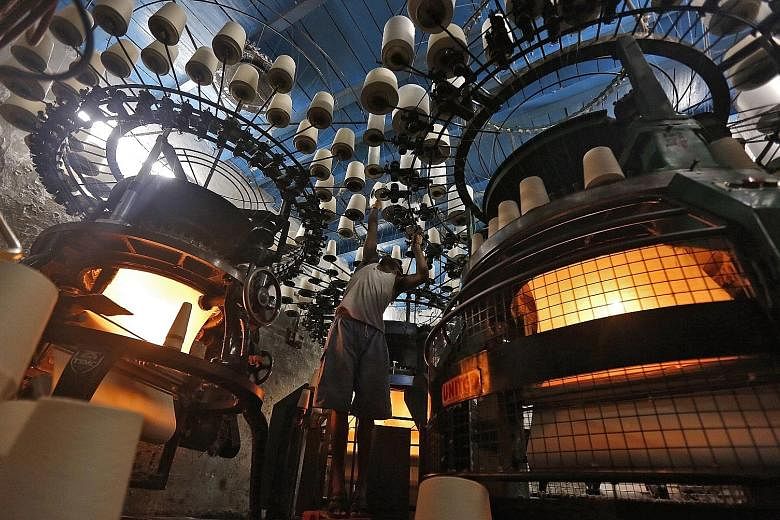SYDNEY • Japanese manufacturing activity shrank in April at the fastest pace in more than three years as deadly earthquakes disrupted production, while output in China and the rest of Asia remained lukewarm at best.
Even the former bright spot of India took a turn for the worse as both domestic and foreign orders dwindled, pulling its industry barometer to a four-month trough.
But it was a somewhat mixed picture in the euro zone, where factories did slightly better last month, with output not losing as much momentum as initially thought.
Still, growth in activity remained weak despite the second deepest price-cutting since early 2010, surveys showed yesterday.
Manufacturing growth was strong in Italy and Spain last month and Germany showed signs of reviving, but activity in France contracted at the steepest rate in a year.
Markit's manufacturing Purchasing Managers' Index (PMI) for the euro zone rose to just 51.7 from March's 51.6, slightly better than an earlier flash estimate of 51.5.
A reading above 50 indicates growth.
"The survey is signalling an anaemic annual rate of growth of manufacturing production of just less than 1 per cent, which is half the pace seen in the months leading up to the recent slowdown," said Markit chief economist Chris Williamson.
"The backdrop remains one of sub-trend growth, inflation that is below target, difficulty in increasing revenue as margins are sacrificed to win modest volume gains, slow wage growth cramping spending and central banks that have used up much of their policy ammunition," was the sober assessment of Mr Alan Oster, chief economist at National Australia Bank.
That is exactly why the US Federal Reserve has been dragging its feet on a follow-up to its December rate hike, leaving the markets in a sweat in case they move in June.
Doubts about policy ammunition mounted last week when the Bank of Japan refrained from offering any hint of more stimulus, sending stocks reeling as the yen surged to 18-month highs.
The Nikkei stock index was down another 3.6 per cent yesterday while the yen raced as far as 106.14 to the US dollar and squeezed the country's giant export sector.
Industry was already struggling to recover from last month's earthquakes that halted production in the southern manufacturing hub of Kumamoto.
The impact was all too clear in the Markit/Nikkei Japan Manufacturing PMI, which fell to a seasonally adjusted 48.2 in April, from 49.1 in March.
The news was only a little better in China where the official PMI was barely positive at 50.1 in April, a cold shower for those hoping fresh fiscal and monetary stimulus from Beijing would enable a speedy pick-up.
The findings were "a little bit disappointing", senior emerging market economist Zhou Hao at Commerzbank in Singapore wrote in a note.
"To some extent, this hints that recent China enthusiasm has been a bit overpriced and the data improvement in March is short-lived."
South Korea's activity did at least stabilise in April after contracting for three months straight, with the Nikkei/Markit PMI edging up to 50, from 49.5 in March.
Yet it also reported demand from China was the worst in three months, with exports to its biggest market tumbling 18.4 per cent yearon-year. Likewise, weakness in new orders and exports dragged on Taiwanese activity in April.
REUTERS

